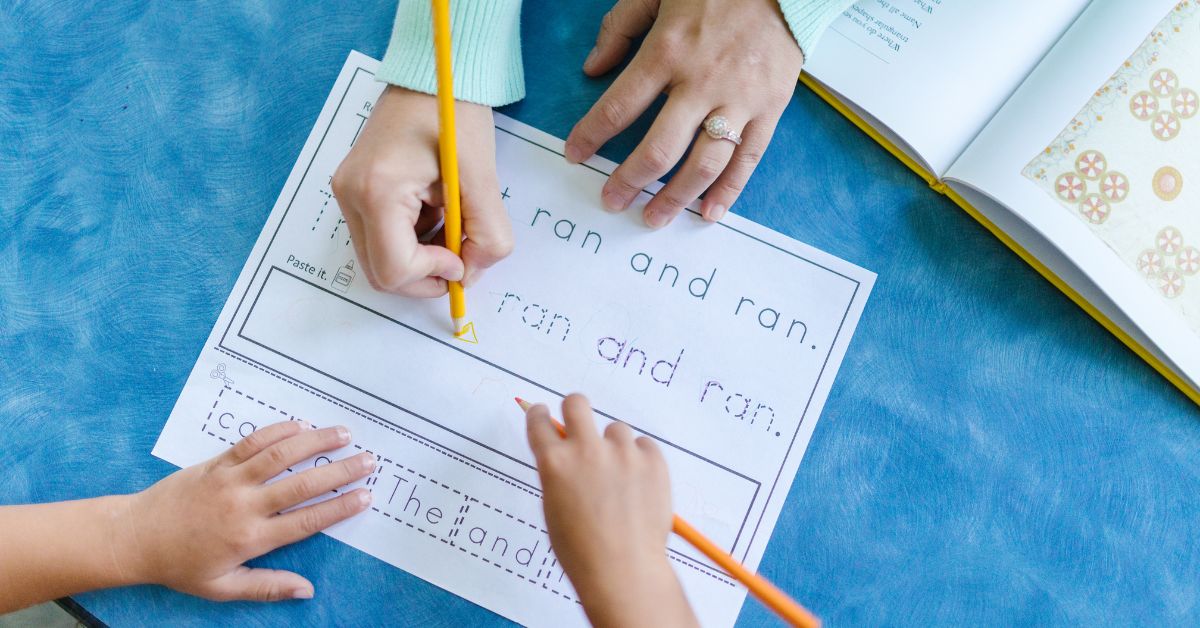Helping kids with writing struggles can be challenging but deeply rewarding. Writing is a fundamental skill that builds a foundation for critical thinking, communication, and self-expression. However, for children with learning difficulties, writing may feel overwhelming. With the right strategies and tools, you can teach your child to overcome their struggles and develop confidence in their writing abilities.
Understanding The Challenges Of Writing Difficulties
Before we explore specific strategies, it’s important to understand the types of struggles children might face when it comes to writing. Writing difficulties can include challenges with:
- Fine motor skills: Difficulty gripping a pencil or forming letters properly.
- Spelling and grammar: Trouble remembering spelling rules, grammar structures, or punctuation.
- Sentence structure and organization: Difficulty creating coherent sentences or logically organizing ideas.
- Cognitive load: Feeling overwhelmed by the multiple steps involved in writing, from forming letters to formulating ideas.
- Learning disabilities: Conditions like dysgraphia, ADHD, or dyslexia can further complicate the writing process.
Recognizing the specific challenges allows parents to implement targeted strategies for improvement.
Practical Writing Tips For Children With Learning Difficulties
Breaking the process into manageable steps is key to helping kids find writing less daunting. These practical tips can make writing more accessible and enjoyable:
- Make Writing a Fun Daily Activity
The more children engage with writing, the more confident they will become. Turn writing into a rewarding and low-pressure part of your daily routine.
- Write about what they love: Encourage your child to write about topics they’re genuinely interested in, such as their favorite video game, animal, or family vacation.
- Use creative tools: Provide colorful markers, gel pens, or shaped notebooks that make the process more enjoyable.
- Set achievable goals: Start with short exercises, like writing a single sentence or filling out a silly Mad Libs book.
- Celebrate small wins: Praise their effort regardless of mistakes. Positive reinforcement encourages progress.
- Provide Hands-On Support for Fine Motor Skills
If fine motor coordination impedes your child’s writing, consider introducing tools and activities that strengthen these abilities.
- Use adaptive tools: Pencil grips, wider pencils, or erasable pens can ease the physical challenge of writing.
- Try sensory activities: Using playdough, tracing letters in sand, or forming letters with clay strengthens motor skills in a playful way.
- Gradual practice: Guide your child through tracing letters and shapes before moving on to freeform writing.
- Use Graphic Organizers to Simplify Ideas
Children with learning difficulties often struggle with structuring their thoughts. Graphic organizers can help simplify this process.
- Mind maps and webs: These allow kids to brainstorm ideas visually before starting to write.
- Sequence charts: Help them outline events in the order they want to write about them.
- Sentence starters: Provide prompts like “I think…”, “My idea is…”, or “I believe…” to help your child form complete thoughts.
- Break Down the Writing Process Into Steps
Writing can feel overwhelming when treated as a single task. Teach your child to approach it step-by-step.
1st – Prewriting: Use brainstorming techniques to gather ideas (e.g., through drawing or verbal discussion).
2nd – Drafting: Encourage them to freely write ideas without worrying about spelling or grammar.
3rd – Editing: Help your child review and correct errors after drafting—this can be a great opportunity to teach grammar rules gently.
4th – Publishing: Celebrate their final product by displaying it on the refrigerator or sharing it during family time.

Teaching Strategies For Writing Challenges
When homeschooling a child with writing struggles, the teaching approach matters as much as the content. Tailor your strategies to their unique needs and learning style to foster a positive environment for growth.
Create a Safe and Encouraging Writing Space
Children thrive when they feel safe and supported. When it’s time for writing lessons:
- Provide structure and predictability: Establish a consistent writing routine so your child knows what to expect.
- Offer frequent breaks: Writing demands can be draining, especially for children with ADHD or dysgraphia. Use timers to structure work and rest periods.
- Minimize distractions: Choose a quiet, organized space to help your child concentrate on the task.
- Encourage voice-to-text tools: If handwriting feels too hard, allow them to dictate their ideas. Voice-to-text tools can be empowering.
Use Multisensory Approaches
Children with learning difficulties often benefit from engaging multiple senses during lessons. Combining auditory, visual, and kinesthetic elements reinforces key concepts.
- Read aloud while writing: Hearing words spoken clearly can improve spelling recognition.
- Color-code words: Use colors to group elements like nouns, verbs, or adjectives.
- Combine drawing with writing: Allow your child to sketch ideas before they write about them.
- Teach through games: Play games like Scrabble or Pictionary to make spelling and letter recognition fun.
Customize Lessons Based on Their Specific Needs
A generic teaching plan may not work for children with writing challenges. Take time to adjust exercises to suit their abilities:
- For dysgraphia: Focus on typing over handwriting, as fine motor demands can be reduced.
- For ADHD: Include movement-based activities, like hopping to retrieve letters or spelling words while bouncing a ball.
- For dyslexia: Use phonics-based techniques, mnemonic devices, and repetitive exercises to strengthen their writing foundation.
Leverage Technology
Modern tools can be a game-changer for children with learning difficulties. These options bring a new level of engagement and ease to writing lessons:
- Writing apps: Tools like Grammarly or Hemingway Editor guide your child as they type, pointing out errors in a non-intimidating way.
- Design software: Programs like Canva allow children to digitally combine images and text, helping them take pride in final projects.
- Audiobooks and podcasts: These resources expose children to sentence structure and vocabulary in an enjoyable, pressure-free format.
Fostering Confidence & The Importance Of Positive Feedback
A critical aspect of helping kids with writing struggles is building their confidence. Children who face constant difficulties can easily develop a negative self-image tied to their writing abilities. Be patient and celebrate effort instead of perfection. For example, if your child writes a story full of spelling mistakes, praise their creativity first before helping them correct errors. Avoid focusing exclusively on outcomes; instead, involve your child in the process. For instance, invite them to select the topic, tool, or format they feel most excited about. When kids have ownership over their learning, they feel inspired to do their best.
Remember, motivation comes from feeling capable and supported. Reinforce this by putting their work on display—whether it’s on a wall, digital portfolio, or even in a homemade book. Additionally, encourage consistent practice without overloading them. Ten minutes of relaxed writing daily can be more effective than an hour of frustration once a week.
Positive feedback can be the turning point for kids struggling with writing. Children with learning difficulties often face criticism or judgment that erodes their self-esteem. Shift the narrative by highlighting their strengths before addressing areas for growth. For instance, if their handwriting is messy but their story is rich with imagination, praise their creativity first. Constructive feedback should be gentle and framed as a way to “make their work shine.”
When correcting errors, use a collaborative approach. Sit with your child and work through changes together instead of pointing them out in isolation. This creates an opportunity for learning without making them feel inadequate.
Small Wins
Progress in writing rarely arrives overnight. It shows up in small wins—the sentence that finally flows, the paragraph with a clear point, the moment a child chooses a stronger word without being prompted. As those wins stack up, children start to see themselves differently. Pride replaces frustration. Curiosity nudges fear aside. They become more willing to try a new draft, add more detail, or share their work out loud.
This growth is a journey, not a race. Some days will feel easy; others will be bumpy. Patience is your greatest tool. When you pair it with consistent routines, clear strategies, and warm encouragement, you give children the safety to take risks and the structure to improve. Celebrate effort as much as outcomes—highlight the revision they stuck with, the question they asked, the attempt they made to clarify a tricky idea. These moments build confidence brick by brick.
With the right tools, thoughtful teaching, and steady positive reinforcement, struggling writers can—and do—change. You’re not just helping them write better sentences. You’re helping them find their voice, trust their thinking, and see themselves as capable learners. Keep showing up. Keep modeling. Keep cheering for every step forward. Over time, those steps become strides, and those strides lead to confident, capable writers who are ready for whatever challenge comes next.





